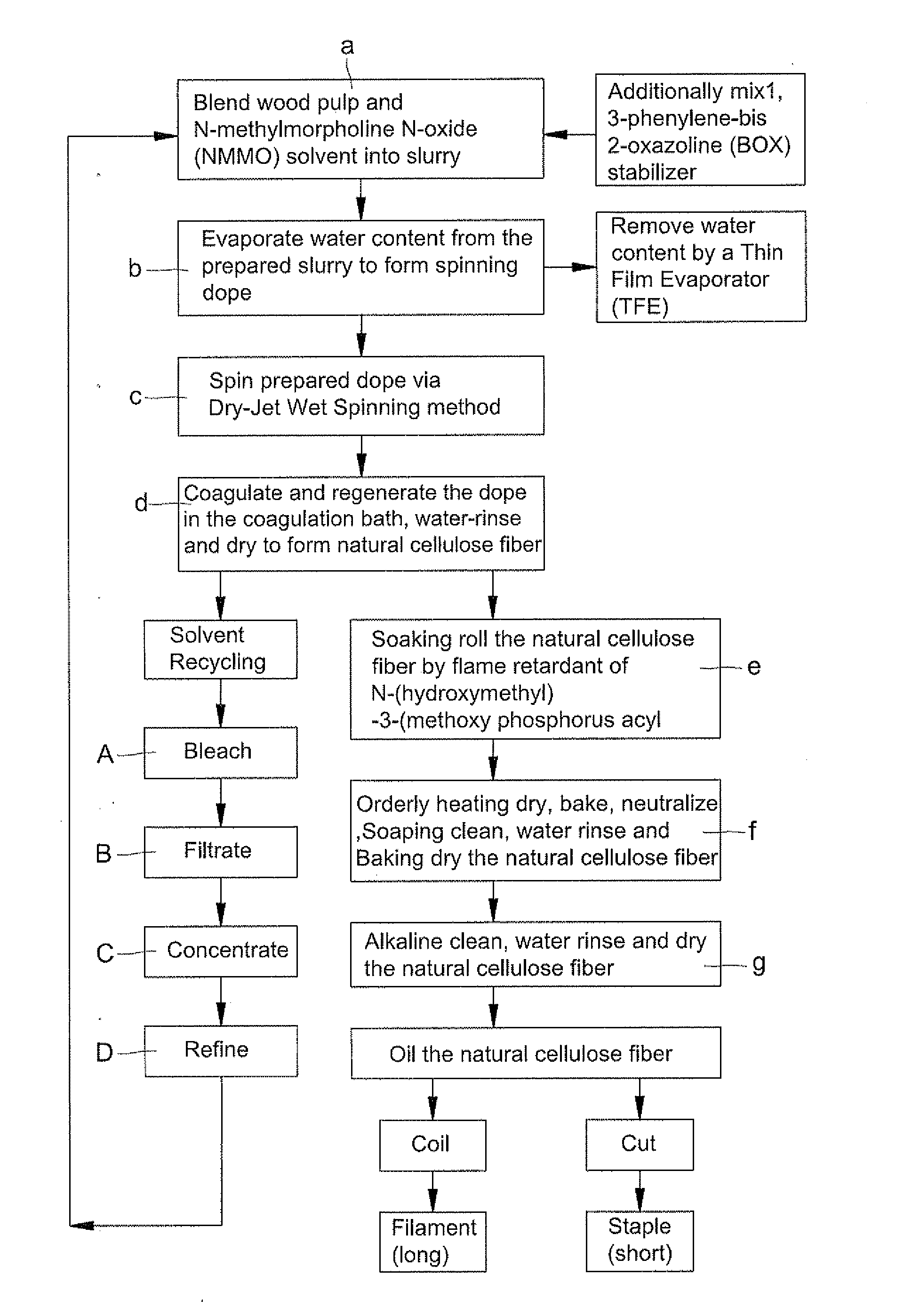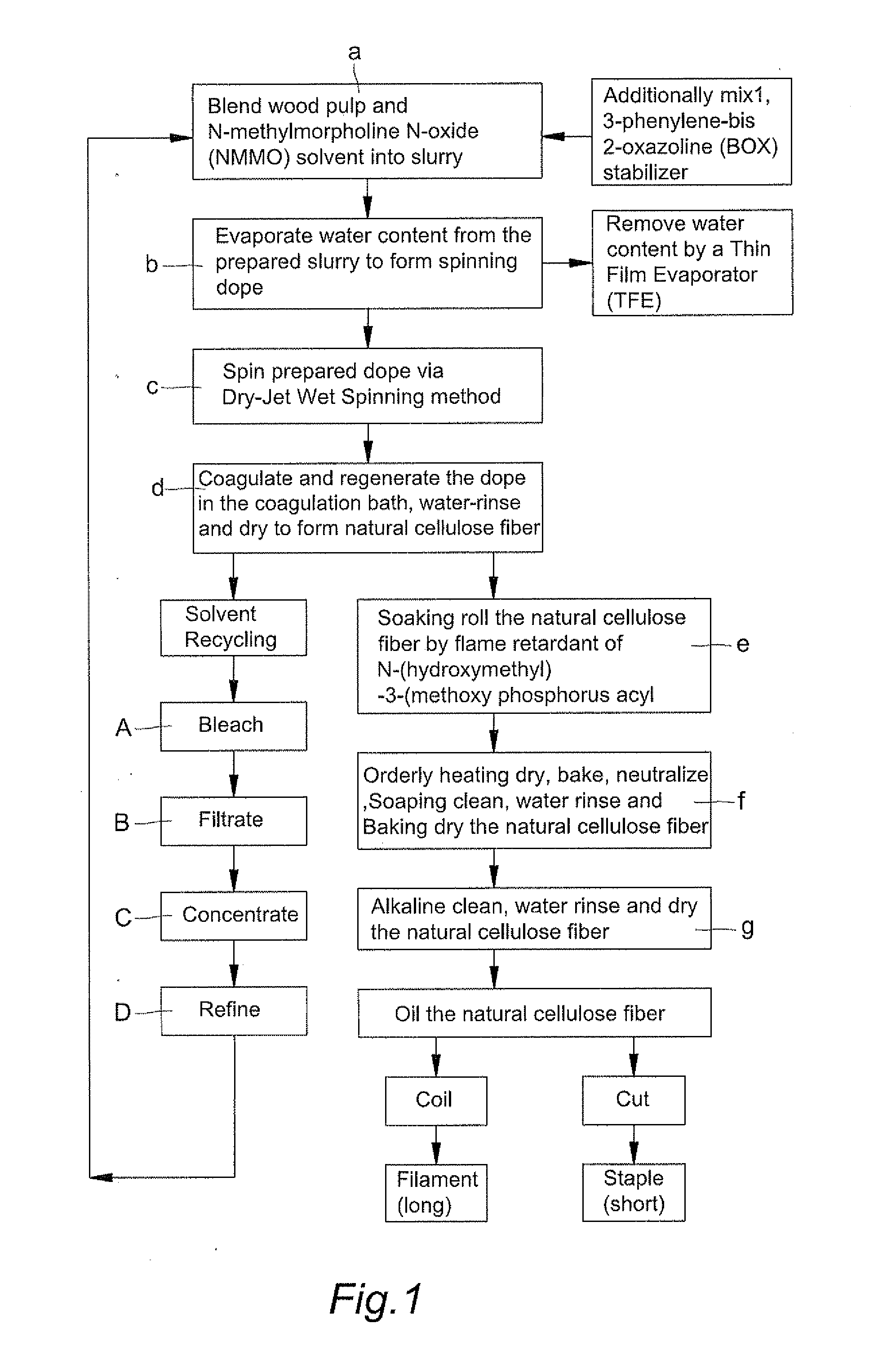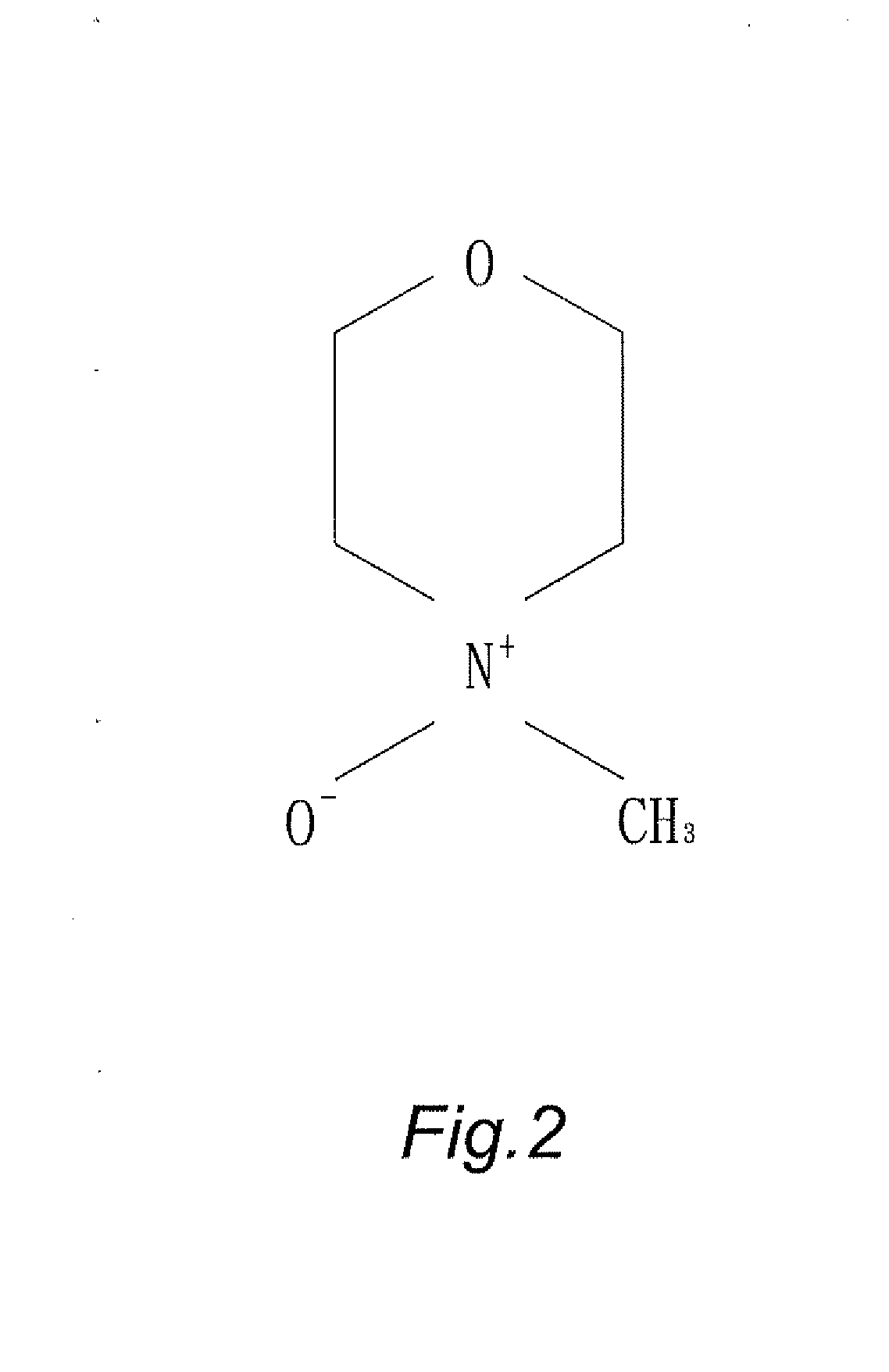Fabrication of natural cellulose fiber with flame-retarding capability
a technology flame retardant, which is applied in the field of flame retardant capability fabrication can solve the problems that the waste of natural cellulose fiber itself or its fabric can be naturally degraded or decomposed, and achieve the effect of reducing the cost of solvent recycling and simple and effective processing facilities
- Summary
- Abstract
- Description
- Claims
- Application Information
AI Technical Summary
Benefits of technology
Problems solved by technology
Method used
Image
Examples
embodiment 1
Specimens in Number D1-D12 and F1-F12
[0031]Blend cellulose of wood pulp in degree of polymerization (DP) being 650 and solvent of N-methylmorpholine N-oxide (NMMO) to form into slurry, next additionally mix stabilizer of 1,3-phenylene-bis 2-oxazoline (BOX) in different added proportion into prepared slurry. Then, evaporate extra water content from the prepared slurry by a Thin Film Evaporator (TFT) under temperature between 80 degree of Celsius and 120 degree of Celsius (80° C.-120° C.) heating for 5 minutes to remove extra water content so that a spinning dope is formed with water content of 5%-13%. The composition table of dope for different specimens indicated D1-D12 is shown in Table-1. By means of Dry-Jet Wet Spinning method, force the dope to spinning machine by metering pump for extruding the dope out of a plurality of spinnerets and into a coagulation bath. Then, coagulate said spinning dope in the coagulation bath and regenerate it into spinning filaments for water-rinsing ...
embodiment 2
Specimens in Number D13-D24 and F13-F24
[0032]Blend cellulose of wood pulp in degree of polymerization (DP) being 1050 and solvent of N-methylmorpholine N-oxide (NMMO) to form into slurry, next additionally mix stabilizer of 1,3-phenylene-bis 2-oxazoline (BOX) in different added proportion into prepared slurry. Then, evaporate extra water content from the prepared slurry by a Thin Film Evaporator (TFE) under temperature between 80 degree of Celsius and 120 degree of Celsius (80° C.-120° C.) heating for 5 minutes to remove extra water content so that a spinning dope is formed with water content of 5%-13%. The composition table of dope for different specimens indicated D13-D24 is shown in Table-1. By means of Dry-Jet Wet Spinning method, force the dope to spinning machine by metering pump for extruding the dope out of a plurality of spinnerets and into a coagulation bath. Then, coagulate said spinning dope in the coagulation bath and regenerate it into spinning filaments for water-rins...
embodiment 3
Test for Flame Retarding Capability
[0033]Blend cellulose of wood pulp in degree of polymerization (DP) being 650 and 1050 with solvent of N-methylmorpholine N-oxide (NMMO) to form into slurry, next additionally mix stabilizer of 1,3-phenylene-bis 2-oxazoline (BOX) into prepared slurry. Then, evaporate extra water content from the prepared slurry by a Thin Film Evaporator (TFE) under temperature between 80 degree of Celsius and 120 degree of Celsius (80° C.-120° C.) heating for 5 minutes to remove extra water content so that a spinning dope is formed with water content of 5%-13%. By means of Dry-Jet Wet Spinning method, force the dope to spinning machine by metering pump for extruding the dope out of a plurality of spinnerets and into a coagulation bath. Then, coagulate said spinning dope in the coagulation bath and regenerate it into spinning filaments for water-rinsing and drying to form natural cellulose fiber. Soaking roll the natural cellulose fiber by flame retardant of N-(hydr...
PUM
| Property | Measurement | Unit |
|---|---|---|
| Temperature | aaaaa | aaaaa |
| Temperature | aaaaa | aaaaa |
| Temperature | aaaaa | aaaaa |
Abstract
Description
Claims
Application Information
 Login to View More
Login to View More - R&D
- Intellectual Property
- Life Sciences
- Materials
- Tech Scout
- Unparalleled Data Quality
- Higher Quality Content
- 60% Fewer Hallucinations
Browse by: Latest US Patents, China's latest patents, Technical Efficacy Thesaurus, Application Domain, Technology Topic, Popular Technical Reports.
© 2025 PatSnap. All rights reserved.Legal|Privacy policy|Modern Slavery Act Transparency Statement|Sitemap|About US| Contact US: help@patsnap.com



